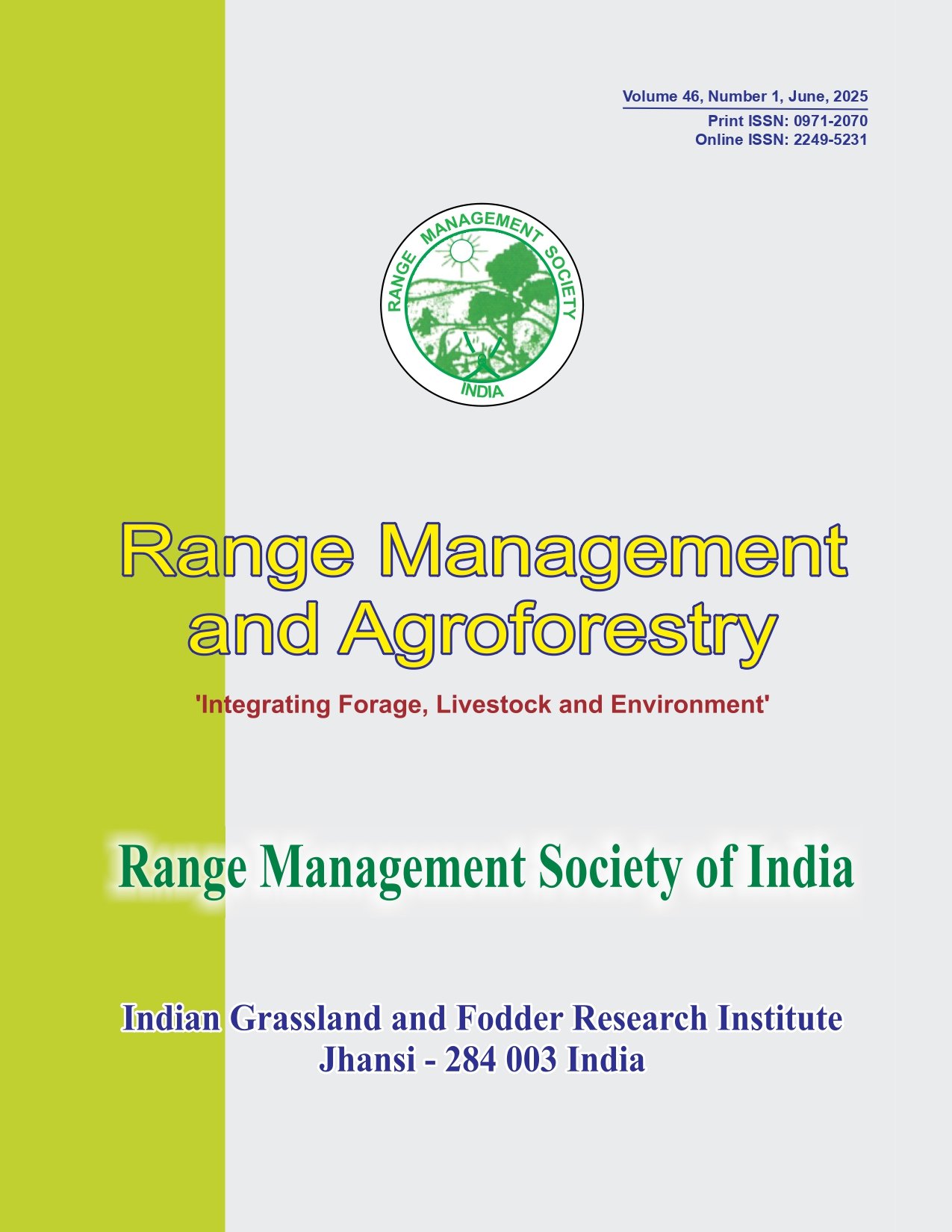Assessment of barley and berseem for feed-forage yield, land use efficiency and profitability under varying intercropping row ratios
DOI:
https://doi.org/10.59515/rma.2024.v45.i2.18Keywords:
Dry matter intake, Economics, Fodder yield, Grain yield, LER, Nutrient uptake, RFQ, TDN content.Abstract
An experiment was conducted during rabi season of 2020-21 to record the effect of different intercropping row ratios on feed and forage yield, land use efficiency and profitability. The experiment consisted of nine treatments viz. sole barley, sole berseem, intercropping of barley + berseem in 1:1, 2:1, 1:2, 2:2, 3:1, 1:3 and 3:3 row ratios. The experiment was laid out in a randomized block design with three replications. The results of the study revealed that in barley, maximum grain yield (3.46 t ha-1) was recorded with sole barley, which was at par with 2:1 row ratios of barley + berseem intercropping. Intercropping of barley + berseem in 2:1 row ratio also recorded maximum dry fodder yield (6.27 t ha-1), land equivalent ratio (1.21), relative crowding coefficient (3.73), phosphorus uptake (12.34 kg ha-1), net return (Rs 45834 ha-1) and benefit-cost ratio (2.44). Further, in forage berseem maximum green fodder yield (49.03 t ha-1), crude protein (18.27%), TDN content (64.08%), dry matter intake (2.71%), digestible dry matter (66.41%) and relative feed quality (141.16%) were recorded with sole berseem treatment followed by 1:3 and 1:2 row ratio of intercropping.








